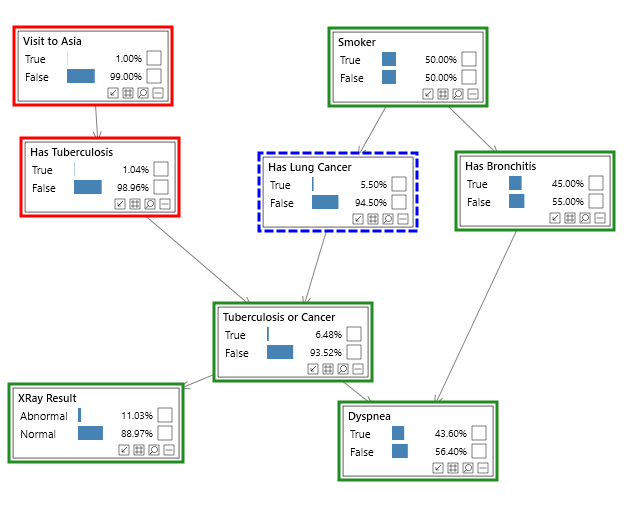D-Separation
For a tutorial please see D-Separation tutorial.
D-Separation determines whether one group of nodes A can influence another group of nodes B. D-Separation is conditional on the current evidence.
Although the links in a Bayesian network are directed, information can (in general) flow in both directions, depending on the types of connections (serial, converging, diverging) and which evidence is set. D-Separation makes understanding connectivity given the evidence easy.
The Bayes Server User interface will update dynamically in response to new evidence.
Bayes Server have developed advanced algorithms to make these computations efficient.
Bayes Server also supports causal D-Separation calculations. i.e. when interventions (Do evidence) is present.

D-Separation display
This option allows you to select one or more source nodes, and the results of a d-separation query are automatically displayed on the network. Results are updated dynamically as evidence changes.
Key to colors
- Blue - Source node
- Green - D-Connected
- Red - D-Separated
Note that if a node is instantiated it will simply not display a color
D-Separation query
This option allows you to perform more complex d-separation queries, including those which involve temporal nodes in a Dynamic Bayesian network (DBN).
Simply select a set of source nodes and a set of test nodes. For temporal nodes, they must be assigned a time, however the same temporal node can be added more than once if the associated times differ.